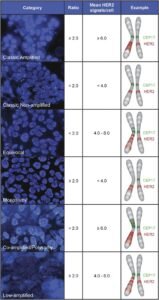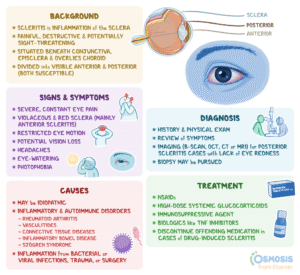Pilates vs. Weight Training_ Which Exercise Suits Your Fitness Goals_
Pilates vs. Weight Training: Choosing the Right Fitness Path for You
When deciding between Pilates and weight training, understanding their unique benefits is key to aligning your choice with your fitness goals. Both approaches enhance overall health, but they cater to different priorities—Pilates emphasizes flexibility, core strength, and functional fitness, while weight training excels in building muscle mass, boosting bone density, and supporting weight loss. This guide breaks down their differences, benefits, and how to choose based on your objectives.
Key Differences Between Pilates and Weight Training
-
Pilates: Focuses on controlled movements to improve core stability, flexibility, and mobility. It’s low-impact, making it ideal for injury prevention and recovery.
-
Weight Training: Involves lifting weights or using resistance to build muscle strength and size. It places more stress on muscles and bones, promoting growth and density.
Your choice depends on whether you prioritize mobility and injury prevention (Pilates) or strength and muscle development (weight training).
What Is Pilates?
Pilates is a holistic exercise system that blends static and dynamic movements to enhance strength, flexibility, and mobility. It can be practiced on a mat with no equipment or with specialized tools like reformers, resistance bands, or Pilates rings. The focus is on engaging core muscles, improving posture, and coordinating breath with movement.
Core Principles of Pilates
-
Centering: Activating the core to stabilize the body.
-
Concentration: Focusing on precise form for each movement.
-
Control: Performing exercises with deliberate intent.
-
Precision: Ensuring accuracy in every repetition.
-
Breath: Syncing movements with rhythmic breathing.
-
Flow: Seamlessly transitioning between exercises.
Pilates is ideal for those seeking a balanced, low-impact workout that enhances functional fitness.
What Is Weight Training?
Weight training, or resistance training, builds strength by using external weights (dumbbells, kettlebells, or machines) or body weight as resistance. It typically involves performing sets of repeated movements, such as 3 sets of 12 squats with a barbell or 2 sets of 15 push-ups. The goal is to challenge muscles, leading to increased strength, size, and endurance.
Benefits of Weight Training
-
Enhances muscle size and strength.
-
Improves bone density, reducing osteoporosis risk.
-
Supports weight loss by boosting metabolism.
-
Improves balance and stability.
Weight training suits those aiming to sculpt their physique or increase physical power.
Comparing Benefits for Specific Goals
Goal: Weight Loss
Both Pilates and weight training burn calories, but weight training often burns more in less time due to its higher intensity. Muscle growth from weight training also increases your resting metabolic rate, helping you burn more calories even when inactive. To lose weight, pair either exercise with a calorie deficit (burning more calories than you consume).
-
Best Choice: Weight training for faster calorie burn and metabolic boost.
-
Pilates Role: Supports weight loss by building lean muscle and improving body composition.
Goal: Muscle Building
For significant muscle growth, weight training is superior. Lifting heavy weights creates muscle tension, promoting hypertrophy (muscle size increase). Pilates builds lean muscle and strengthens the core but doesn’t produce the same bulky muscle growth.
-
Best Choice: Weight training for muscle mass.
-
Pilates Role: Enhances muscle tone and core stability.
Goal: Functional Fitness
Functional fitness refers to the ability to perform daily tasks—like lifting groceries or climbing stairs—with ease. Pilates excels here, as its exercises mimic natural movements, improving endurance, flexibility, and coordination. Weight training focuses more on isolated muscle strength, though it can still support functional tasks.
-
Best Choice: Pilates for mobility and everyday movement.
-
Weight Training Role: Builds strength for specific tasks requiring power.
Goal: Flexibility
Pilates is designed to enhance flexibility through flowing, stretching movements. Many exercises target muscle lengthening and joint mobility. Weight training, while beneficial for strength, doesn’t prioritize flexibility unless paired with stretching routines.
-
Best Choice: Pilates for improved range of motion.
-
Weight Training Role: Incorporate dynamic warm-ups to support flexibility.
Goal: Injury Prevention and Recovery
Pilates is gentler, focusing on controlled, body-weight movements that stabilize joints and muscles. It’s often recommended for those with lower back pain or recovering from injuries. Weight training, especially with heavy weights, can strain the body if not done with proper form.
-
Best Choice: Pilates for low-impact recovery and injury prevention.
-
Weight Training Role: Use lighter weights and focus on form for safe recovery.
Goal: Fitness as You Age
Both exercises benefit older adults, but they address different needs. Pilates reduces fall risk by improving balance, mobility, and core strength. Weight training enhances bone density, countering osteoporosis, and supports balance through strength gains.
-
Best Choice: Combine both for optimal aging benefits—Pilates for mobility, weight training for bone health.
-
Key Consideration: Consult a healthcare provider before starting, especially with conditions like osteoporosis or arthritis.
How to Choose the Right Option
-
Assess Your Goals: Prioritize muscle growth or weight loss? Choose weight training. Seeking flexibility or injury recovery? Opt for Pilates.
-
Consider Enjoyment: Pick the workout you’re more likely to stick with long-term.
-
Evaluate Physical Condition: If you have injuries or joint issues, start with Pilates. For robust health, weight training may be safe with proper guidance.
-
Consult Professionals: Speak with a doctor or personal trainer to tailor a plan to your needs, especially if you have health concerns like heart disease or asthma.
Conclusion
Neither Pilates nor weight training is inherently “better”—the best choice hinges on your goals, preferences, and physical condition. Pilates shines for flexibility, core strength, and functional fitness, while weight training is unmatched for building muscle and bone density. For optimal results, consider blending both to create a balanced fitness routine that supports strength, mobility, and overall health.
💡 Frequently Asked Questions
Pilates
* Raises energy
* Raises simple exercise
* Will increase versatility
* Stops harm
* Increases very low back again soreness
* Minimizes falls
Body weight Working out
* Increases vitality
* Will increase muscle mass measurement
* Boosts equilibrium
* Supports excess weight reduction
* Raises bone density
What Is Pilates?
Answer coming soon. We are working on detailed responses to this common question.
The primary Pilates essentials are:
* Centering: Activating the main
* Concentrate: Concentrating notice upon the ideal variety
* Deal with: Executing every single circulation with objective and handle
* Accuracy: Making sure each individual flow is carried out properly, with each repetition
* Respiratory: Aligning the routines with the rhythm of your breaths
* Stream: Transitioning towards one particular stream toward the future without the need of preventing What Is Fat Exercising?
Answer coming soon. We are working on detailed responses to this common question.
⭐ Expert Tips
- Include seasonal or trendy variations to keep your meals exciting.
- Highlight prep shortcuts or time-saving techniques for busy cooks.
- Consider dietary restrictions and include substitution suggestions.
✅ Key Takeaways
- These dinner ideas are perfect for impressing guests or enjoying special occasions.
- Choose recipes that match your skill level and available kitchen tools.
- Presentation and taste both contribute to a memorable dining experience.
📣 Join Our Community
Want more inspiration like this? Subscribe to our newsletter for weekly dinner ideas and cooking tips!






